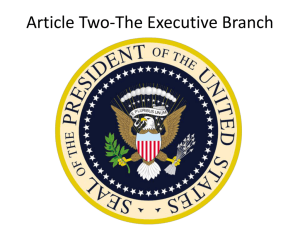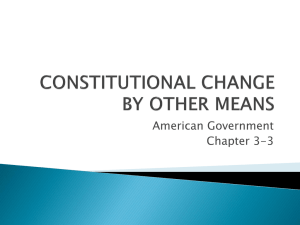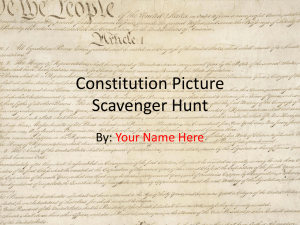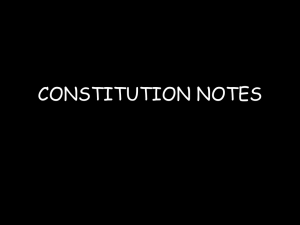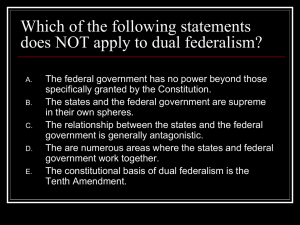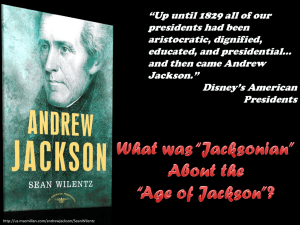That`s An Order - Department of Social Sciences
advertisement
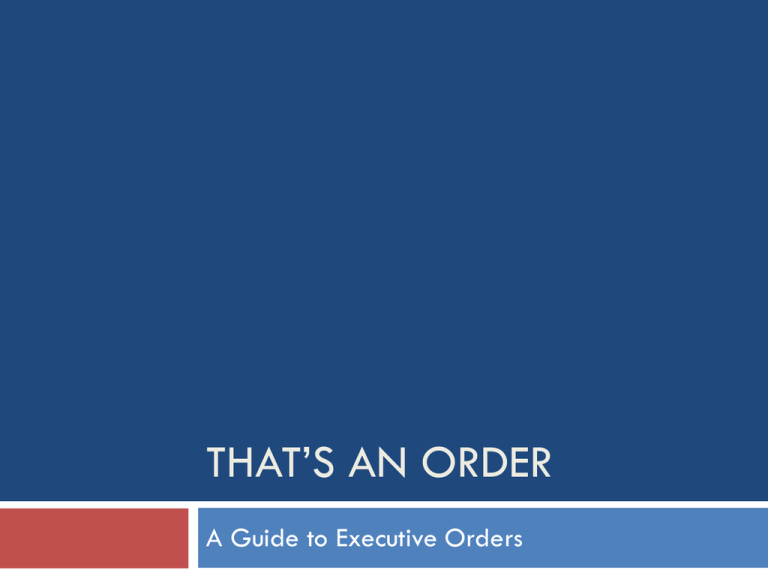
THAT’S AN ORDER A Guide to Executive Orders Presidential Actions • • • Presidential Actions • Executive Orders • Presidential Memoranda • Proclamations • http://www.presidency.ucsb.edu/signingstatements.php Legislation Nominations & Appointments Post TV: Can Congress stop the President: http://www.washingtonpost.com/posttv/politics/can-congress-stop-anexecutive-order/2014/11/19/d17bb6e8-701c-11e4-a2c2478179fd0489_video.html http://www.whitehouse.gov/briefing-room/presidential-actions/executiveorders What is an executive order? An executive order is a directive handed down directly from a president that has much the same power as federal law. Presidents use executive orders to direct and manage how the federal government operates. Executive orders can only be given to federal or state agencies, not to citizens. Even though they cannot be given directly to citizens, citizens are impacted by them. Executive Power Where are the powers of the Executive Branch found? In your group, use your copy of Article II of the Constitution to find the power to issue Executive Orders Article II of the United States Constitution Did you find it? Implied Power? It is argued that the power to issue executive orders is implied in the following statements in the Constitution: Executive means having the power to put plans, actions, or laws into effect. “The executive power shall be vested in a President of the United “The President shall be States” Commander and Chief of the Army and Navy “He shall take care that of the United States” the laws be faithfully executed” Where do executive orders fit? Question for Discussion: In our system of checks and balances and separation of powers, where do you think executive orders fit? Legislative Judicial Make laws Interpret laws Executive Enforce laws Power Check How is the power to issue an executive order “checked”? Congress can also check the The constitutionality of an executive order can be challenged in the courts. It can be found unconstitutional. In the case of Youngstown Sheet & Tube vs. Sawyer, the Supreme Court decided that an executive order issued by President Truman to have the federal government seize control of steel mills was unconstitutional. power of an executive order by creating legislation that would reverse or limit the executive order. “Thecould President’s What be the power problem to see that the laws are here? faithfully executed refutes the ideacan that he The President veto is to be a lawmaker.” legislation created by From the majority opinion Congress. To review: An executive order is a directive handed down directly from a president that has much the same power as federal law. Presidents use executive orders to direct and manage how the federal government operates. Executive orders can only be given to federal or state agencies, not to citizens. Even though they cannot be given directly to citizens, citizens are impacted by them. Let’s look at some examples: Take a look Are you aware of any specific Executive Orders in the history of our country? Do you know which Presidents issued the most Executive Orders? Identify pros and cons of Executive Orders. http://www.presidency.ucsb.edu/data/orders.php Proclamation 104 Suspending the Writ of Habeus Corpus Throughout the United States A writ of habeas corpus is used to bring a prisoner before the court to determine if the person's imprisonment or detention is lawful By order of the President, the writ of habeus corpus was suspended in the case of prisoners of war, spies, those who assisted the enemy, those who are deserters of the war effort, and those who resisted being drafted into military service. This executive order was issued during the Civil War by President Abraham Lincoln. Executive Order 9066 The President authorized the Secretary of War and designated military commanders to create “military areas” under executive order 9066. These zones were created during World War II following the bombing of Pearl Harbor by the Japanese. Those relocated and placed in these “military zones” were persons of Japanese ancestry living in the United States, whom the government feared could have loyalty to Japan, leading them to spy on American war efforts or sabotage the United States. These “military zones” would come to be known as Japanese Internment Camps. Executive Order 9981 Prior to the implementation of Executive Order 9981 the armed forces were segregated by race and also had visible signs of discrimination present. Executive Order 9981 required equal treatment and opportunity for all in the armed services. Photos from: www.whitehouse.gov http://www.trumanlibrary.org/whistlestop/study_collections/de segregation/large/index.php Executive Order 13228 Following the terrorist attacks on the United States on September 11, 2001, President George W. Bush created the Department of Homeland Security which would help secure the United States from terrorist threats and/or attacks. Photos from: www.whitehouse.gov http://www.september112001.com/chao.jpg Executive Order 13632 • Hurricane Sandy made landfall on October 29, 2012, resulting in major flooding, extensive structural damage, and significant loss of life. • A dangerous nor'easter followed 9 days later causing additional damage and undermining the recovery effort. • As a result of these events, thousands of individuals were displaced and millions lost power, some for an extended period of time. Over 1,600 stores were closed, and fuel distribution was severely disrupted, further complicating the recovery effort. • Executive Order 13632 was put in place by President Barack Obama to provide assistance to those impacted by the storm. Executive Order http://www.washingtonpost.com/posttv/national/o bamas-speech-on-immigration-in-threeminutes/2014/11/20/5fe626de-7126-11e4a2c2-478179fd0489_video.html http://www.washingtonpost.com/posttv/national/b oehner-to-obama-you-sure-are-acting-like-anemperor/2014/11/20/12093a44-7114-11e4a2c2-478179fd0489_video.html What do you think? Should the President be able to issue orders that have the force of law without the consent of Congress? Or should Congress be the sole entity that can issue laws that impact citizens? If It’s Not in the Constitution… …let’s make it an amendment. In a small group, you will be proposing an amendment that either shows support for executive orders or prohibits executive orders. Using That’s An Order Handout A, you will outline and create a formal amendment to the Constitution. We will then put the amendments to a vote! In your amendment… • • • Include: A definition of an executive order. An example of an executive order in history that supports your position. An explanation of how executive orders relate to checks and balances and the separation of powers.

